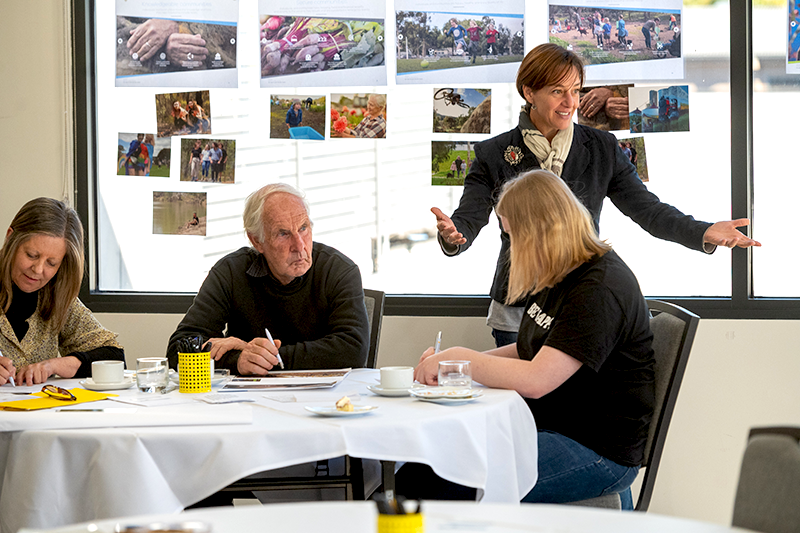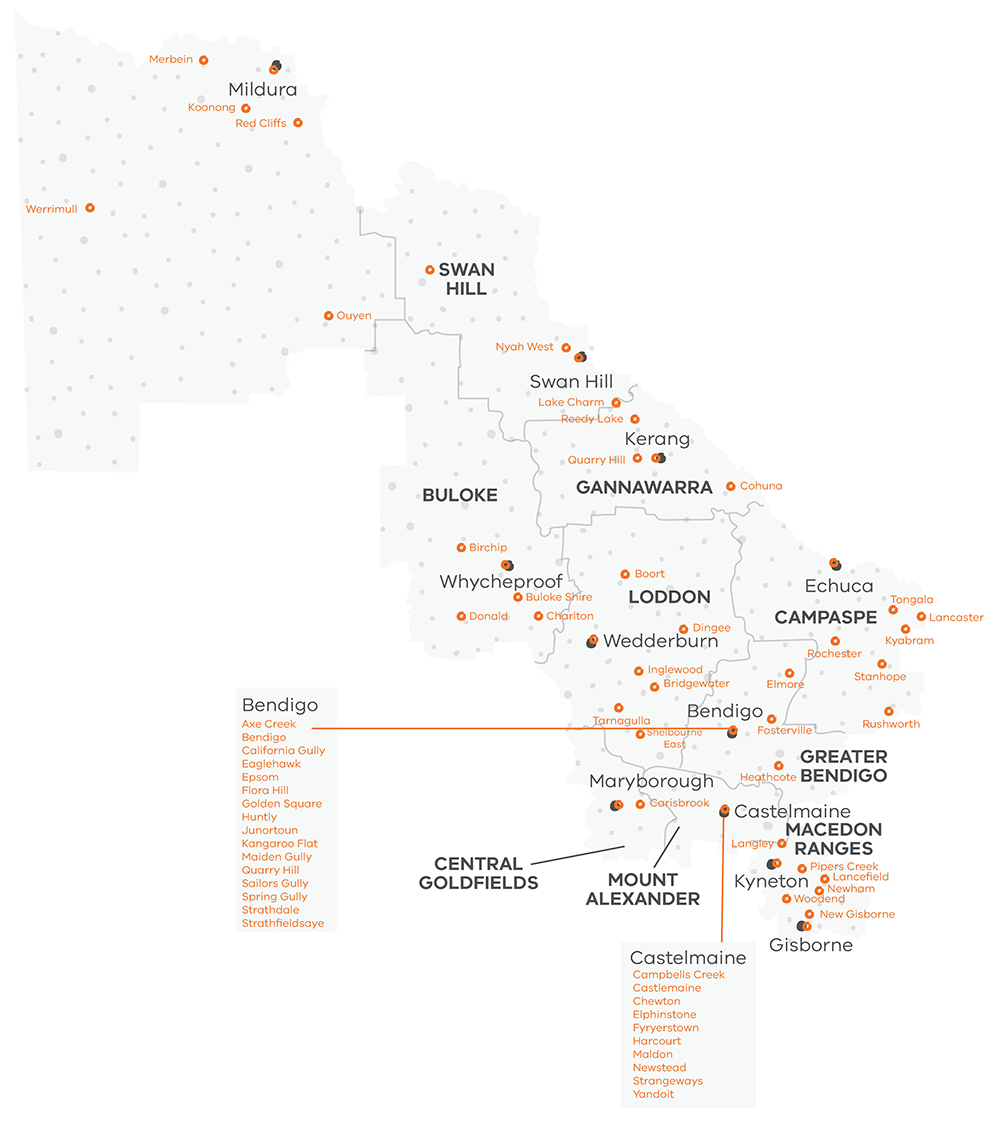


Working with community
Understanding how climate change is impacting communities in our region involves not just listening to the latest science but also to experiences on the ground.
Over the last two years ADAPT Loddon Mallee worked with and supported our communities to deliver grassroot adaptation projects. Despite the challenges posed by COVID-19 we also undertook a range of both in person and online engagement activities. Together they helped us to gain a deeper understanding of what climate impacts our communities were most concerned about and how communities were meeting those challenges.
What we heard
Through our engagement activities we heard from individuals, communities and businesses about local observed changes in climate, what they were most concerned about and who and what they considered most vulnerable.
Observed changes
1st: Longer harsher fire seasons and bushfire smoke (air pollution)
2nd: Seasonal changes
3rd: Changed rainfall patterns and drought
4th: Extreme heat events
5th: Storms/extreme rainfall and flooding
6th: Ecological changes (including pest incursions)
Business – highest concerns
• Impacts of drought and heatwaves on staff health and job security
• Impacts of air pollution, fire, storms and water availability on their workplaces and assets
• Impacts of drought and water availability on markets, day to day operations and finances
Community – highest concerns
• Biodiversity loss
• Impact to industries, agriculture, and local jobs
• Local food security
• Loss of green space/access to the environment
• Loss of water sources and water poverty
• Thermal comfort of homes (including affordability of cooling)
• Impacts on outdoor recreation
• Physical health risks (heat, smoke inhalation etc)
• Mental health risks (no hope, climate anxiety etc)
• Risks to heritage sites/tourism
Our community is particularly concerned about the vulnerabilities of some groups such as youth, the elderly and volunteers, together with threats to key natural populations, such as bees, that support both our agricultural and natural ecosystems.
Engagement activities
- More than 120 organisations directly engaged
- Approx. 720 individuals directly engaged
- Activities and projects in 74 different towns
- 42 workshops
- More than 200 surveys
- More than 12,000 indirect engagements through projects
- More than 50,000 indirect engagement through social media/newspapers
- 100 Community Conversation kits
- 36 participants on our community working groups
- 8,000 School Climate Change Activity books
- Desktop review of 141 documents


On vulnerability
• People disproportionately impacted by climate change due to social factors such as: The elderly, young people, First Nations’ people, people living in isolation, volunteer-dependent emergency services and networks and emergency service volunteers
• Food systems, biodiversity, agricultural businesses and water sources
• Recreational spaces (including community sporting facilities), green spaces (public/private gardens and existing exotic street trees) and tourism

We acknowledge and respect Victorian Traditional Owners as the original custodians of Victoria’s land and waters, their unique ability to care for Country and deep spiritual connection to it. We honour Elders past and present whose knowledge and wisdom has ensured the continuation of culture and traditional practices. We are committed to enabling self-determination for all Aboriginal people and aim to work closely with the Aboriginal community to drive action and improve outcomes especially in the context of a changing climate.